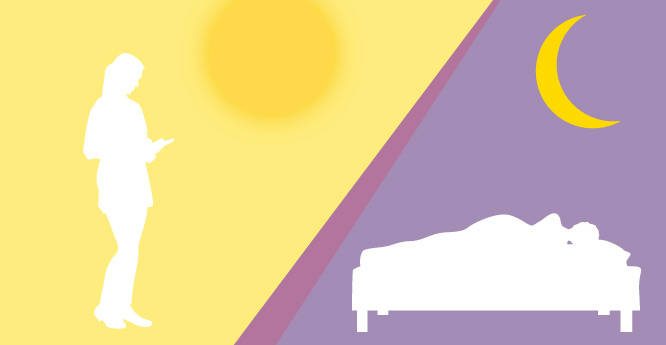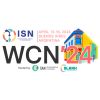HealthManagement, Volume 16 - Issue 4, 2016
IMPACT IN HEALTHCARE WORKPLACES

Circadian Rhythm
The Circadian rhythm dictates that living organisms sleep during the night and are awake during the day. This internal autonomous function ensures adequate rest, avoidance of emotional disorder and the reduction of future morbidity and mortality.
Ideally the work timetable is adapted to the Circadian rhythm, but there are certain professional groups for which this is difficult within current conditions and the applicable legal framework. The medical profession falls into this category. The rolling working hours and insufficient relaxation time often mean staff are unable to work and rest in line with the Circadian rhythm. This situation has negative consequences, such as the full deregulation of Circadian rhythm in these professional groups and the disorder of physiological balance between work and rest (Garbarino 2014; West 2001). This is a situation that has been exacerbated in working conditions in recent years owing to the burden of fiscal adjustment and the effects on the medical profession especially in the Greek health system.
Theoretical Approach: Rolling Schedules and Melatonin
The deregulation of the normal secretion of the melatonin hormone, instrumental in managing sleep cycles, is thought to be the actual cause of any pathological consequences for occupational groups in medicine. If the portion of the brain where the melatonin secretion is regulated is damaged, then the Circadian rhythm disappears.
See Also: Ward Managers Need More Training for e-Rostering
Psychological Consequences of Circadian Rhythm Disorder: ‘Burnout’
As to the psychological impact, nurses are a high-risk population for depressive symptoms regardless of the rolling schedule. For example, according to one study, in a relatively large sample (n=3474) the incidence of clinically significant symptoms was recorded at 38 percent. Indeed, this study confirms the aggravating role of a rolling schedule, since those working on rotating schedule for two or more nights a week had a statistically more significant probability of clinically significant depressive symptoms than those not working on rotating schedule (Gong et al. 2014). These findings are confirmed in an earlier study of the nursing population by Skipper et al. (1990) and in a study which found that depressive symptoms affected in turn identical nursing work by reducing staff durability in work in staggered shifts (Jung and Lee 2015).
Moreover, depressive symptoms of rolling schedules seem to trigger a wider range of psychopathology. According to the results of various studies, professionals who work on rotating shifts have a higher probability of clinically significant anxiety and sleep disorder (Flo et al 2014; Oyane et al 2013). As a result of exhausting hours, burnout syndrome is triggered. Burnout is defined as physical fatigue and the psycho-emotional exhaustion of the worker (Skouteli 2010). This is considered a concerning situation since the reputation of health institutions is impacted by poor care.
Physical Morbidity and Rolling Working Hours
In terms of physical morbidity, the first symptom appears to be tiredness (Øyane et al. 2013) followed by a series of psychosomatic and musculoskeletal problems (Nicolleti et al. 2014) and chronic, potentially fatal bodily diseases. Specifically, a large epidemiological study in the USA revealed that those who worked more than five years in rolling schedules had a greater chance of death due to cardiovascular problems and other causes than those who were not working in rotating shifts (Gu et al. 2015). Researchers from Mount Sinai Hopsitals in the USA reported at the American Heart Association meeting in 2014 that the toxic combination of fatigue, frustration and irritability from exhausting work increased the risk for cardiovascular disease by 36 percent (Onmed.gr 2014). In terms of cancer, Gu et al.’s research confirmed a causal relationship only with lung cancer not overall cancer mortality (Gu et al. 2015). The Mount Sinai researchers also showed that people who experience constant disruption of the Circadian rhythm and experience intense stress and fatigue smoke and eat more unhealthily as they are seeking ways to address the situation (Onmed.gr 2014).
The Road Ahead
Circadian rhythm disorder has a strong negative impact on the health and lives of medical staff employed mainly on rolling schedules. It is possible that there may also be an increased prevalence of psychological disorders uninvestigated to this day in this population (eg, excessive anxiety, sleep disorder, panic attacks).
Therefore either policies towards minimising rolling timetables and working hours should be implemented along with six-hour rather than eight-hour days (as in Sweden), or introduction of increased and regular rest periods should be considered.
There is a need for practical and practicable strategies to be created at management level, with training and education through management programmes and the establishment of control and monitoring with periodic stress test programmes for employees.
Indeed, both because of the probability of error on the part of the professional and of increased morbidity, health systems may be burdened with a much heavier load in the future.
It is essential that the issue of Circadian rhythm burnout
is addressed at a management and policy level in order for the quality of
services and the integrity and sustainability of health systems throughout
Greece and Europe to be sustainable.
References:
Flo E, Pallesen S, Moen BE et al. (2014) Short rest periods between work shifts predict sleep and health problems in nurses at 1-year follow-up. Occup Environ Med, 71(8): 555-61.
Garbarino S. 2014 [24-hour work: the interaction of stress and changes in the sleep-wake cycle in the police force]. G Ital Med Lav Ergon 36(4): 392-6. [Article in Spanish]
Gong Y, Han T, Yin X et al. (2014) Prevalence of depressive symptoms and work-related risk factors among nurses in public hospitals in southern China: a cross-sectional study. Sci Rep 4: 7109.
Gu F, Han J, Laden F et al. (2015) Total and cause-specific mortality of U.S. nurses working rotating night shifts. Am J Prev Med, 48(3): 241-52.
Josten EJ, Ng-A-Tham JE, Thierry H (2003) The effects of extended workdays on fatigue, health, performance and satisfaction in nursing. J Adv Nurs, 44(6): 643-52.
Jung HS, Lee B (2015) Contributors to shift work tolerance in South Korean nurses working rotating shift. Appl Nurs Res, 28 (2): 150-5.
Leung M, Tranmer J, Hung E et al. (2016) Shiftwork, chronotype and melatonin patterns among female hospital employees on day and night shifts. Cancer Epidemiol Biomarkers Prev , Mar 3. pii: cebp.1178.2015. [Epub ahead of print]
Nicoletti C, Spengler CM, Läubli T (2014) Physical workload, trapezius muscle activity, and neck pain in nurses' night and day shifts: a physiological evaluation. Appl Ergon , 45(3): 741-6.
Øyane NM, Pallesen S, Moen BE (2013) Associations between night work and anxiety, depression, insomnia, sleepiness and fatigue in a sample of Norwegian nurses. PLoS One, 8(8): e70228.
Skipper JK Jr, Jung FD, Coffey LC (1990) Nurses and shiftwork: effects on physical health and mental depression. J Adv Nurs, 15(7): 835-42.
West S (2001) Circadian rhythm, shiftwork and you! Collegian, 8(4): 14-21.
Onmed.gr (2014) [The "burn out" syndrome hides actual risk for heart] [Article in Greek] [Accessed: 23 September 2016] Available from onmed.gr/ygeia/story/322305/to-syndromo-burnout-kryveiamesokindyno-gia-tin-kardia
Skouteli E. 2010 Medical Type: Combat of Occupational Burnout Syndrome (burn out). [Article in Greek] [Accessed: 19 October 2016] Available from iatrikostypos.com
















